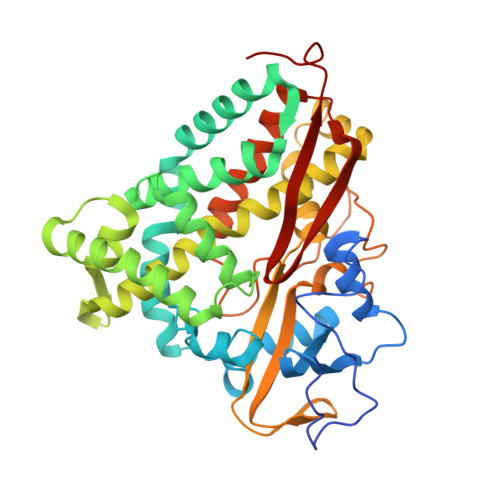Crystal structure of substrate-free Pseudomonas putida cytochrome P-450.
Poulos, T.L., Finzel, B.C., Howard, A.J.(1986) Biochemistry 25: 5314-5322
- PubMed: 3768350
- DOI: https://doi.org/10.1021/bi00366a049
- Primary Citation of Related Structures:
1PHC - PubMed Abstract:
The crystal structure of Pseudomonas putida cytochrome P-450cam in the substrate-free form has been refined at 2.20-A resolution and compared to the substrate-bound form of the enzyme. In the absence of the substrate camphor, the P-450cam heme iron atom is hexacoordinate with the sulfur atom of Cys-357 providing one axial heme ligand and a water molecule or hydroxide ion providing the other axial ligand. A network of hydrogen-bonded solvent molecules occupies the substrate pocket in addition to the iron-linked aqua ligand. When a camphor molecule binds, the active site waters including the aqua ligand are displaced, resulting in a pentacoordinate high-spin heme iron atom. Analysis of the Fno camphor - F camphor difference Fourier and a quantitative comparison of the two refined structures reveal that no detectable conformational change results from camphor binding other than a small repositioning of a phenylalanine side chain that contacts the camphor molecule. However, large decreases in the mean temperature factors of three separate segments of the protein centered on Tyr-96, Thr-185, and Asp-251 result from camphor binding. This indicates that camphor binding decreases the flexibility in these three regions of the P-450cam molecule without altering the mean position of the atoms involved.

















